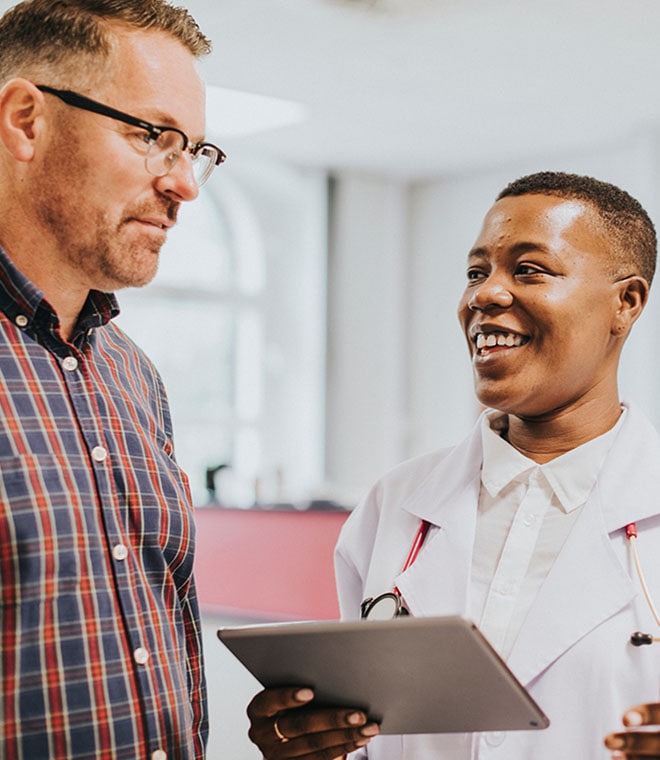Health
Hemorrhoid remedies: What are the options?
By Yoo Jung Kim, MD Sep 25, 2024 • 9 min
Hemorrhoids are a very common condition. In fact, by age 50, half of all people will have experienced hemorrhoid symptoms at some point. Many hemorrhoids do not cause symptoms, so you may not even know that you have them. Others, however, may cause itchiness, irritation or rectal bleeding. Fortunately, there are a number of remedies available for treating hemorrhoids at home in addition to other treatment options.
Hydrocortisone
A common treatment for hemorrhoids is hydrocortisone, an over-the-counter topical steroid that acts as an anti-inflammatory agent, which helps temporarily relieve irritation associated with hemorrhoids. Hydrocortisone may be found in cream, ointment or suppository form. To help ease pain, hydrocortisone may be combined with a topical numbing agent, such as lidocaine or benzocaine, in certain over-the-counter hemorrhoid preparations. However, because long-term use of topical steroids can thin the surrounding skin and mucous membranes, steroids should generally not be used for more than seven days unless indicated by a healthcare provider.
Phenylephrine
Some medications for hemorrhoids, such as phenylephrine, work by constricting blood vessels in order to shrink hemorrhoids and relieve itching. Phenylephrine usually comes in an ointment or suppository form.
Benzocaine and lidocaine
Topical medications, such as lidocaine and benzocaine, are also available in ointment and cream form. These medications temporarily block pain signals at the nerve endings to relieve discomfort caused by hemorrhoids.
Sitz bath and Epsom salts
With a sitz bath for hemorrhoids, you use warm water, either in a bathtub or on a special seat attached to the toilet bowl, to soothe the symptoms. Sitz baths are plastic kits that fit over your toilet. They have a gentle sprayer to clean the area and help relax the sphincter muscles and the anal canal. This simple warm water treatment can be used for 15 to 20 minutes, three to four times a day, or as directed by your healthcare provider. Some people find it soothing to add Epsom salts (magnesium sulfate) or baking soda into sitz baths, but there’s limited research to support the effectiveness of Epsom salts for hemorrhoids. Many people claim this OTC product helps with relief of hemorrhoids and other aches and pains.
Witch hazel
One of a number of popular natural remedies for hemorrhoids is witch hazel extract, an astringent, to help protect your skin and relieve burning and irritation. Witch hazel is typically sold as an extract or on pre-soaked hemorrhoid pads. If you suffer from hemorrhoids, wiping with witch hazel after a bowel movement can provide some relief. However, witch hazel may dry out the skin surrounding the anus, so only use as directed.
Zinc oxide, petroleum jelly or aloe vera gel
Applying a topical skin protectant like petroleum jelly, aloe vera gel, or zinc oxide can help guard against irritation. While zinc oxide can provide temporary relief, it can also dry out the skin near the anus.
Ice packs
Applying ice can temporarily help relieve symptoms of swelling and pain. Depending on your skin and the severity of your hemorrhoids, your healthcare provider may have suggestions for how long and often you should use an ice pack.
Hemorrhoid pillow
There are pillows and cushions that are shaped like donuts that can allow you to sit without placing direct pressure on any hemorrhoids. This may help reduce irritation. However, studies supporting the utility of hemorrhoid pillows in hemorrhoid treatment are lacking.
Essential oils
There are a number of home treatments with essential oil ingredients for hemorrhoids. However, further studies are needed to support the use of essential oils in hemorrhoid treatment.
In-office and surgical procedures
If topical treatments and over-the-counter remedies don't work, gastroenterologists and colorectal surgeons can perform in-office and surgical procedures that can address uncomfortable hemorrhoids. These procedures include rubber band ligation, sclerotherapy, infrared coagulation of internal hemorrhoids and surgical excisions.
- Rubber band ligation involves a healthcare provider putting rubber bands at the base of the hemorrhoids
- Sclerotherapy involves injecting specific medications directly into the hemorrhoid
- Infrared coagulation uses bursts of light as a heat source
All three of these procedures aim to cut off the blood supply to the hemorrhoidal tissue, causing it to shrink and fall off.
Surgical excision of hemorrhoids, or hemorrhoidectomy, is necessary when medical management has failed, when there is a large, bulging hemorrhoid or for extremely painful hemorrhoids that necessitate immediate medical treatment.
In addition to conventional hemorrhoidectomies, hemorrhoids may be stapled. During this procedure, the hemorrhoids are not removed but are lifted away from the anus and attached to each other. Speak with a specialist to see which of these procedures may be right for you.
Preventing hemorrhoids
To prevent hemorrhoids, you should try to avoid constipation by:
- Drinking plenty of water
- Being physically active
- Adding fiber to your diet
High-fiber foods include fruits, vegetables and whole grains. These can help soften the stool (poop) and minimize straining while having a bowel movement. A high-fiber diet can also reduce the symptoms of existing hemorrhoids and may help prevent future ones.
In order to make regular and soft stools, many healthcare providers recommend taking in about 22 to 34 grams of fiber per day and drinking at least eight glasses of water per day. If you’re not getting enough fiber in your diet, there are over-the-counter fiber supplements, such as psyllium (Metamucil), methylcellulose (Citrucel), wheat dextrin (Benefiber) or polycarbophil (FiberCon) available. Be sure to drink plenty of water with any fiber supplements and take as instructed.
Hemorrhoids cause irritation and discomfort for millions of Americans. See your healthcare provider if you continue to have irritation, pain or bleeding from your hemorrhoids despite treatment.
Updated by Julie McDaniel, MSN, RN, CRNI, September 2024.
Sources:
- https://www.mayoclinic.org/diseases-conditions/hemorrhoids/symptoms-causes/syc-20360268
- https://www.uptodate.com/contents/hemorrhoids-clinical-manifestations-and-diagnosis
- https://www.uptodate.com/contents/home-and-office-treatment-of-symptomatic-hemorrhoids
- https://www.uptodate.com/contents/image?imageKey=PI%2F104732
- https://www.clinicalkey.com/pharmacology/education/disease-information?di=11685
- https://www.ncbi.nlm.nih.gov/books/NBK558967/
- https://medlineplus.gov/ency/article/002939.htm
- https://www.ncbi.nlm.nih.gov/pmc/articles/PMC5775951/
- https://www.ncbi.nlm.nih.gov/books/NBK549864/
- https://www.health.harvard.edu/diseases-and-conditions/hemorrhoids_and_what_to_do_about_them
- https://www.health.harvard.edu/blog/natural-remedies-for-hemorrhoid-2021022321942
- https://www.uptodate.com/contents/hydrocortisone-topical-drug-information
- https://www.uptodate.com/contents/phenylephrine-topical-drug-information
- https://www.mayoclinic.org/drugs-supplements/benzocaine-topical-application-route/description/drg-20072913
- https://www.mayoclinic.org/drugs-supplements/lidocaine-topical-application-route/description/drg-20072776
- https://medlineplus.gov/hemorrhoids.html
- https://my.clevelandclinic.org/health/drugs/18640-witch-hazel-wipes
- https://americanpregnancy.org/healthy-pregnancy/pregnancy-health-wellness/hemorrhoids-during-pregnancy/
- https://www.acog.org/womens-health/faqs/problems-of-the-digestive-system
- https://www.cdc.gov/diabetes/healthy-eating/fiber-helps-diabetes.html
- https://magazine.medlineplus.gov/article/h20-for-healthy-aging
- https://health.clevelandclinic.org/best-fiber-supplements



